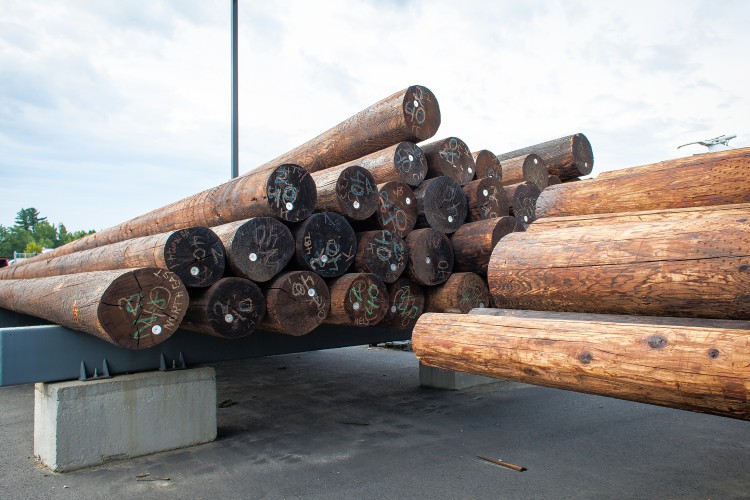Utility poles don’t get much attention considering that they are the most visible part of both the telecommunication and energy system, but the state’s Consumer Advocate wants that to change.
The consumer advocate, Don Kreis, is drawing attention to a deal in which the state’s biggest telephone company (Consolidated Communications) wants to sell its poles to the state’s biggest electric company (Eversource). You can read his piece in InDepthNH.org, an independent news source. As is always the case with his columns, it’s full of valuable context but still snappy.
His big concern is that the cost, which will have to be paid by people who use electricity, is being kept secret. As an Eversource customer I’m not crazy about that. But I’m really interested because it lets us talk about what most of us call “telephone poles” – a misleading term that will be downright inaccurate if the sale goes through.
I wrote a big article about utility poles five years ago, estimating that New Hampshire had 500,000 of them at a cost of at least $60 million at the time. (You can read it here – be warned that it’s not short, and it includes this subhead: “A Machine That Could Fight Godzilla.”)
Due to historical accident, some are owned by phone companies and some by electric companies and some by both. Consolidated wants to sell the 3,844 that it owns outright along with a 50 percent interest in 343,098 others that it shares with Eversource.
Utility poles are a surprising source of dispute – between towns and utilities over how much tax each one pays, and between different utilities over who has to pay to maintain or replace them. There are also disputes about who gets to put their wires and cables on which parts of the pole, a dispute that has held up broadband penetration in some rural areas.
But all the disruptive technology in the world won’t accomplish much without a network of wires and cables to bring electricity and the internet to and from homes and businesses. We are all dependent on the humble teleph – er, utility pole.


 Return to the Concord Monitor
Return to the Concord Monitor
Really, in this day and age, the company wants to keep the cost secret. We don’t do that here in NH. We pride ourselves on openness.
These poles aren’t worth much as then the owner has to maintain them and pay taxes. Sure they will get some income for the rented space others that attach to the pole. The PUC needs to regulate to make sure all us fair.
I see many ‘double poles’ or old poles cut and attached to the new poles because other utilities have not transferred their cables to the new poles. It looks like the PUC does not regulate the proper use of the poles.
I can’t see why the local, county, state, federal govt. ‘owned’ the fiber optic cable and ‘rent’ or share the cables to service providers for transmission to subscribers’ homes. Just like the internet. This will save a lot of energy, money, and hassle of regulating current lines, in case of Laconia, 3, Fidium, Breezeline, and Comcast.
I have retired from telecom outside plant engineering but in past work with pole lines I learned poles jointly occupied by a variety of utilities have assigned pole space, separations and clearances according to National Electric Codes. Some power and telephone companies had joint line agreements where each company owned 1/2 of the poles and they shared installation, maintenance and replacement costs. They also had agreed-upon maintenance areas (towns) where joint poles were maintained by either the telephone or power company. The number of poles for each company was intended to be near equal and there are reciprocal billing rates for work items completed, like pole, anchors, tree trimming, and right-of-way acquisition, and permitting, storm and accident damage, etc. The reciprocal purchase/sale value of each pole depreciates with age since the year installed. I think Consolidated Communications would like to get out of the joint pole ownership and maintenance business and leave future joint pole work to be done by the power company. That would let them sell their 1/2 interest in existing joint poles and pay an annual per pole occupancy rate. It would allow Consolidated to reduce having as many poles, hardware, and equipment on hand for joint pole work, as well as personnel doing line and administration work. Both companies would still have to respond for damage and accident work where their own lines have to be transferred to new poles and dangerous situations corrected.
Joint poles in the NH Electric Coop areas were already owned by the power company and other utilities paid an annual attachment fee. I have heard this power company ownership/fee arrangement may be common in other States, but I don’t know for sure. I think Central Maine Power and Vermont Public Service may operate that way now, too.